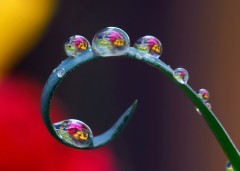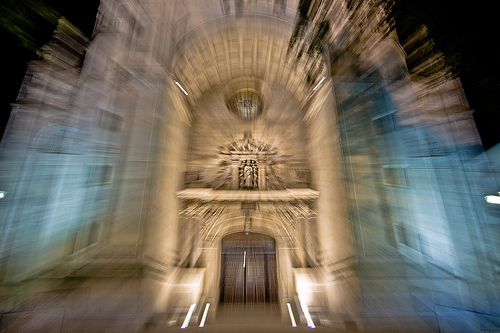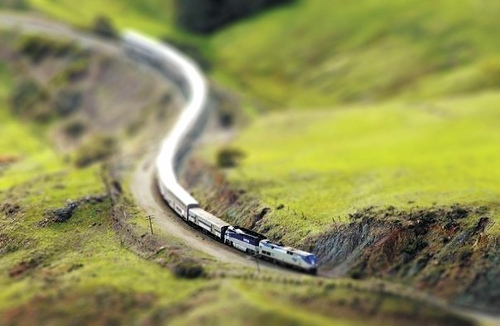
Creative photography opens up the world of opportunities to create awesome, stunning, creative photographs. Checkout Part I of this article “12 Tips To Get Creative For Creative Photography” and “25 Cool Examples Of Creative Photography“. Here is Part II of the series covering the list of techniques which make creative photography possible. So, let’s take a look at various techniques that can be used to make stunning creative photographs.
-
Multiple Exposure
Multiple exposure enables you to combine multiple images to form a single photograph. Multiple exposure opens up a plethora of opportunities for taking creative photography. You can apply one of the several multiple exposure techniques like zooming in-out, creating mirror effect, forming a swirl image, focus shift, etc to get creative output. You have to invest time and effort in getting the overlay and overlapping of multiple images effectively and creatively.
-
Panning
Panning is an effective technique for inducing the motion effect while keeping the subject sharp and focused. While panning finds its application in sports photography and for capturing motion and movement, the results produced by moving the camera along with the subject enable you to get unusual and creative output.
-
High Speed Photography
High speed photography is an art of freezing the motion and movement of the subject. You can get awesome and outstanding photographs by setting the camera to highest shutter speed. This enables you freeze the water droplets (as in splash photography), activity of a dance performer and render beautiful effects by intentionally introducing the motion blurs (by slightly reducing the shutter speed).
-
Zoom Effect
The zoom effect pulls the viewer to the center of interest owing to the zoom streaks formed when attaining the zoom effect. To achieve the zoom effect, rest the camera on the tripod, slow down the shutter speed and release the shutter and twist the zoom ring, both at the same time. This enables you to present the sharp image of the subject amidst the radiant burst of light streaks. The effect can be better understood with the help of the picture given below.
-
HDR Imaging
High Dynamic Range photography is an interesting aspect of photography. It helps you capture and recreate the scene with all the details and colors intact. HDR is the craft of manipulating the images to compose a single image which contains a greater level of dynamic range, which by default is difficult to achieve in-camera. Thus, it requires you to bracket the exposures and thereafter merge the exposures in the image editor. In the course of creating the HDR photographs, the final image reproduces the colors and effect which makes the scene look unreal, surreal yet creative.
-
Time Lapse Photography
Time lapse photography is a sequence of shots over a period of time covering a particular event. These images can then be super-imposed to give the effect of movement and activity in the photograph. This technique helps in telling the story in the sequence of shots.
-
Tilt-Shift Photography
Tilt-shift photography is used for creating a miniature effect, thus portraying the real-life objects as miniature models. Tilt shift photography is basically about using the camera movements of tilt (rotating the camera lens) and shift (adjusting the position of the subject in the image area without moving the camera back) to compose the scene as miniature scene where the real world objects appear as the toys.
-
Long Exposure Photography
Long exposure photography is the essence of the photographs which portray the light trails and the movement of falling & flowing waters. It requires you to go slow on shutter speed to capture the lights and movement / activity of the subject (or in the scene) for a longer duration of time. Owing to the long exposure, the light trails result in formation of unusual shapes. Also long exposures come in handy for stylistic capture of images which create illusionary effect.
-
Using Rear Curtain Flash Sync Mode
Creativity is the essence of photography and develops when one is free to use the various options at disposal. One such option which finds creative applications are the various flash modes. The in-camera flash is not only the complimentary source of light, it is a great option for creating creative photographs. Especially when turning on the rear curtain flash sync mode. In this mode the shutter opens and the flash fires just before the shutter is about to close. This freezes a moving subject in the final instance of the exposure portraying the blur following the subject, which looks artistic and creative.
-
Creative Use Of Reflections And Shadows
Reflections and shadows help in creating illusion. Capturing the reflections and shadows as the subject itself or for complimenting the subject, both help in producing creative results. The reflections as the subject imprint the abstract photography where as capturing the distorted shadows along with the subject makes one curious about the composition.
-
Transparent Screen Technique
Transparent screen trick photography enables you to creatively create the illusion as if the mobile screen or the computer screen is transparent. Refer to the article titled “Beautiful Examples Of Transparent Screen Trick Photos” for inspiration and tutorial for experimenting with this technique. Essentially you take a picture of the background of your room and set it as the wallpaper. This would make the laptop screen seem see-through, but only from a certain distance and angle.
-
Studio Set-Up
Creative photography at its simplest can be achieved through studio set-up where you can emulate the real life natural elements by using props, scenery, scale models, pyrotechnics, steel wool, etc. It becomes fairly easy to photograph the subject with a monument under his hand (owing to scale models) or replacing the face of a human being with an animal or so. You can additionally create artificial snow, fog and clouds (using polymers, sprays, powders or other chemical substances) in the studio to photograph the special effects.
-
Photo-shopping
Post processing is the hub for introducing the special effects through wisely manipulating the images. While the above mentioned techniques require thorough knowledge of photography basics, post processing requires you to master the photo-editor abilities to meet your imaginations. The opportunities are endless with Photoshop. You can introduce 3D effects, create multiple clones, generate polar panoramas, perform levitation photography, portray floating fruits, creating invisible man and so on. This is the simplest of all and thus fail to render the originality to the image. Resort to Photoshoping as the last option.
-
Creativity
The essence of creative photography lies in the creativity, which is a conglomeration of creative vision, creative inspiration and ability to create creative illusion. Even though there are multiple techniques for creating creative photographs, the one thing which makes the photographs creative is “creativity”. And to get the creative photographs you should learn to get creative.
Do you know any other technique for creating creative photographs?





Any example for the 9th one?